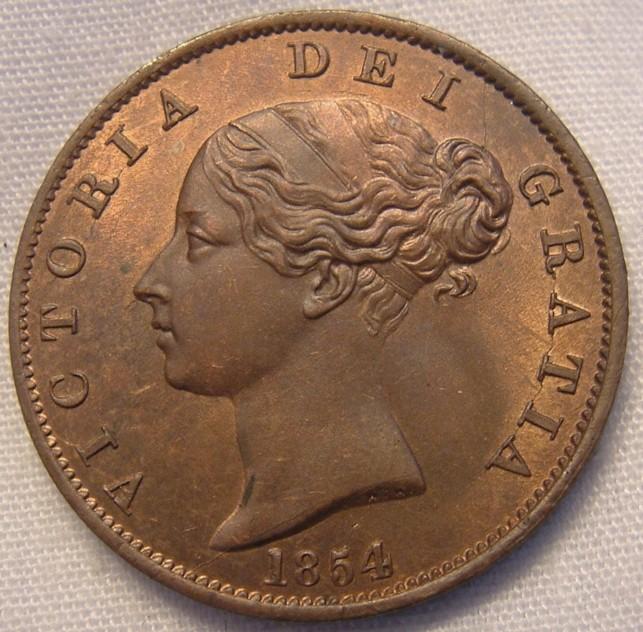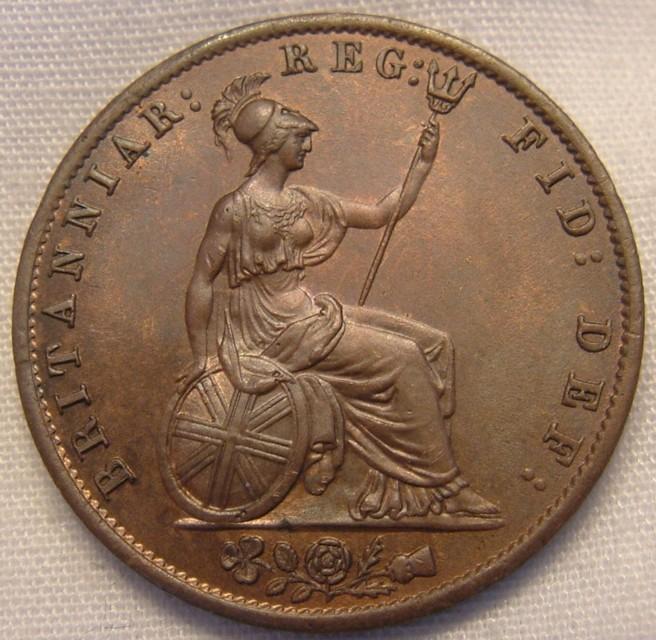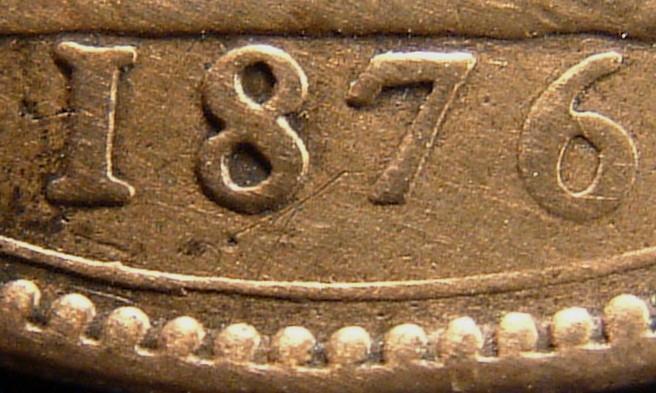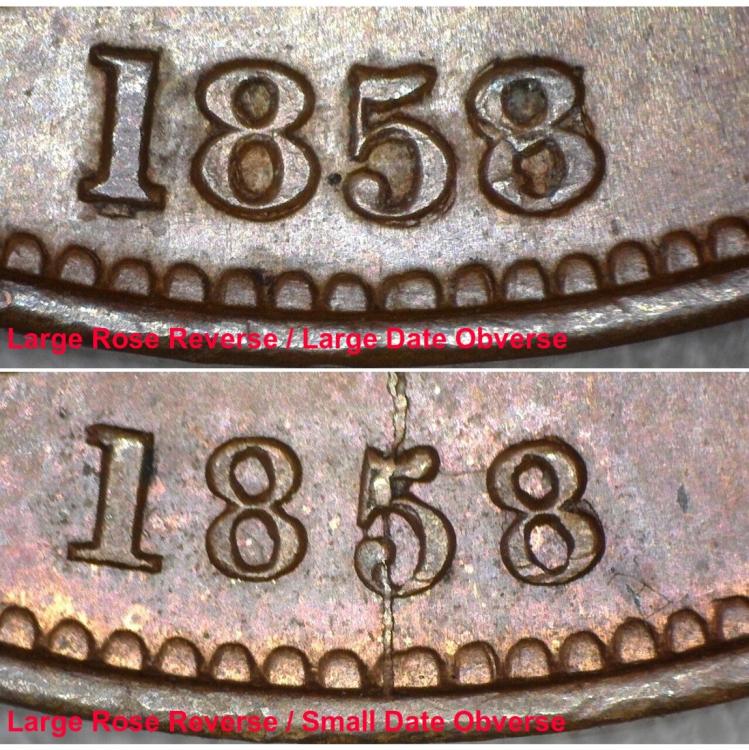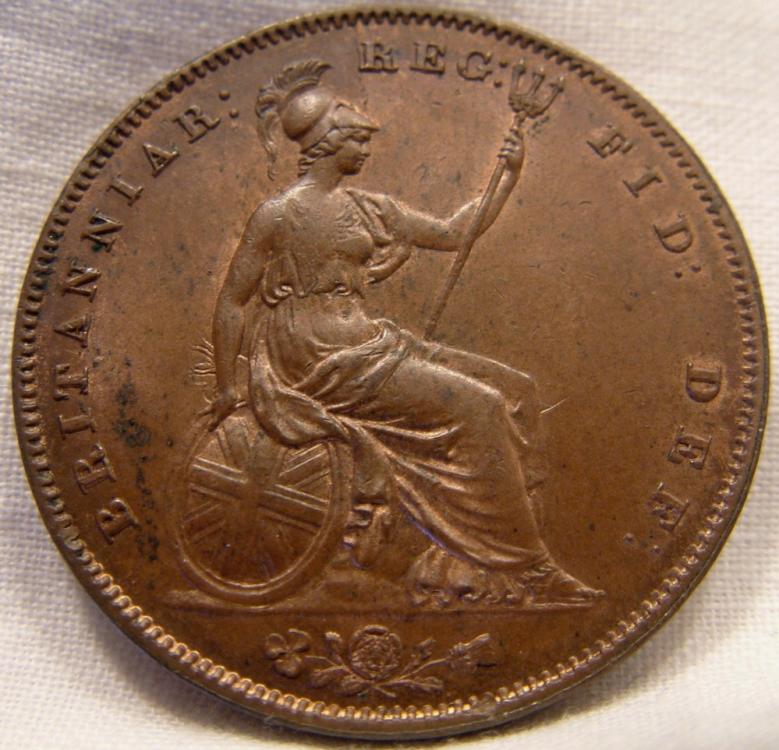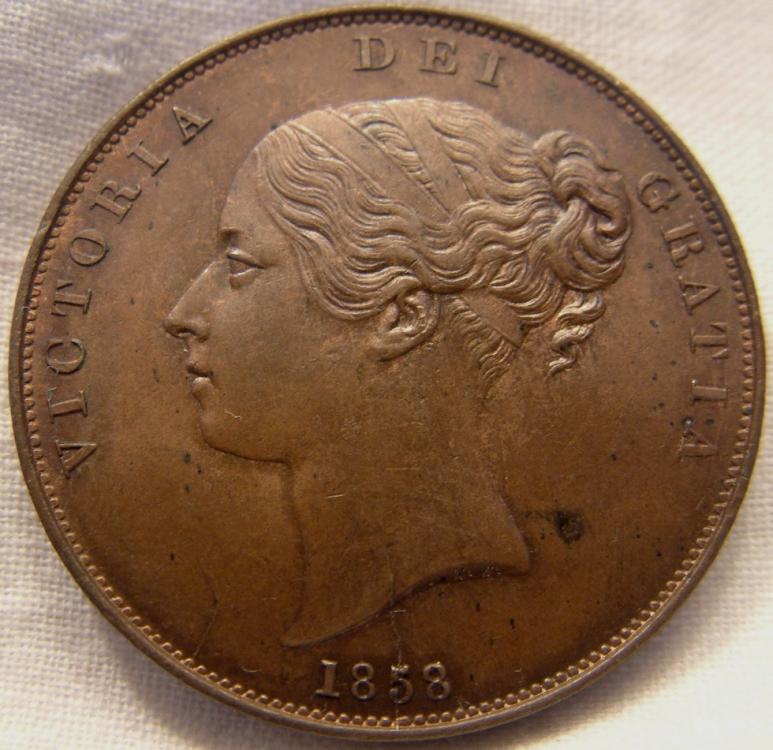-
Posts
786 -
Joined
-
Last visited
-
Days Won
84
Content Type
Profiles
Forums
Events
Downloads
Store
Gallery
Articles
Everything posted by alfnail
-
Thanks for comments, doesn't look like been in acid, but does look like weak strike as Rob suspected. Pictures now attached; seems to be half the weight of the proper 2p at 3.56 grams as opposed to 7.12 grams.
-
I picked up a 1971 2p which weighs only 3.55 grams, almost exactly half the normal weight. It also looks half the thickness, all obverse / reverse features look correct to me although I am no expert on post decimalisation coins. Anyone seen one of these before, is it worth anything over and above the norm...…...….don't expect I will keep it?
-
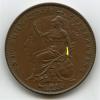
The McGowan Collection
alfnail replied to cathrine's topic in British Coin Related Discussions & Enquiries
It gave me options of +1/2, +1, +2 and +3 and I foolishly trusted it to work as explained in their drop down box; I expect the auctioneer didn't see my increments in the heat of live bidding and/or their system didn't alert him to them. Annoying, because was a coin had been seeking for quite a while and in far better condition than I have ever seen before. Live and learn!- 65 replies
-
- pennies
- halfpennies
-
(and 3 more)
Tagged with:
-

The McGowan Collection
alfnail replied to cathrine's topic in British Coin Related Discussions & Enquiries
I left a proxy bid of $450 + 3 increments (i.e. to stop a single bid from a live bidder outbidding me). Thought that meant that my top bid would then be $450 + ($50x3) = $600, but see this morning that it sold for hammer of $500, with my top bid of $450 having being placed but unsuccessful. Have I misunderstood and messed up or is this the fault of Heritage.- 65 replies
-
- pennies
- halfpennies
-
(and 3 more)
Tagged with:
-

1860 Jb (V over inverted A)
alfnail replied to secret santa's topic in Confirmed unlisted Varieties.
Thanks Richard, it would be surprising if no other examples of this type have been found since Michaels book was published -
For reference, pictures of my 1854HP with V over inverted A. Clearly a full bar on this type, but I do see what Pete means about the 1860JB penny, looking at the close up picture top right on Gouby Page 34
-
Agree with Pete's thinking, but now that nearly 10 years have passed since MG's excellent bronze penny book, can I just ask if anyone found another example of the penny variety 1860JB (V over inverted A in VICTORIA)? I have seen a dozen examples of the same error on the 1854 Half Penny since that was first discovered a few years ago, but never seen another 1860JB penny.....despite looking almost every day! I would have expected a few lower grade pieces to have appeared by now.
-
Many years ago when still a bit green I bought an alleged 1876 No H penny, sold as such, and for all the world looked like it was (pictures attached), but when held at a slant to the light the H was definitely visible.....beware tricks of the light! 🧐
-
Hi Cliff, I emailed the 1853 date pictures to your private email address first thing yesterday, think was around 8Mb in data. I haven't had an undeliverable, so it's possible they are sitting in your 'junk'. Just thought I would check as haven't heard back. Cheers, Ian
-
My initial study was to split counts as per my spreadsheet column headings, so I wasn't particularly looking for dots in the fields. I will have a quick scan if you send me a picture example. My experience of 'dots in fields' are that they are either part of a 'progressive' die flaw or a damage / rust spot picked up later in life through wear and tear. Additional / repaired colon dots I find more interesting e.g. the 1841 REG:: or the extra half dot seen after FID on the 1853OT
-
Hi Cliff, Nice 1853PT. You are correct that your 1853PT is a narrower date width than the Gouby Style C example shown on his website. When one examines the last two numerals of the dates on the Victorian YH penny series under high magnification one finds that there are many minor variations in date widths, numeral alignment and distance to the border teeth. It is rather like the reverse where Bramah said:- “Another prolific source of minor variation is provided by the colons on the rev. Probably every die creates a colon variant…..” To date I have recorded 8 variations like this with the Gouby Style C font, your PT date is amongst them, and has the exact same features as your E of DEI which confirms. You will note on MG’s site that for his italic Style A font he goes on to give additional examples as Aa and Ab, where the last 2 digits are differently located. So I think your piece IS a Style C, but just with variant last two digits which could have been recorded as a Ca or other sub-suffix. Indeed, in hindsight, I would have preferred the example (my coin) which you will see as his Style D to have been recorded as a Style C variant………as it is the same C font, not a new one. Hope this helps; I have pictures of the 8 variations if you would like them, but they are over 3Mb so unable to post on the forum without first reducing definition…….which kind of defeats the objective!
-
Re. my 1853 penny study, the other interesting thing which I noted was that none of the Plain Trident pieces were above a GVF grade, and only a handful around VF...….most were complete tat. My italic 5 piece which I pictured earlier was found outside my 5 year study period. There are some better grade pieces around, because a handful have been sold, for example, by London Coins in the past few years...………….. including one with the italic 5 date in June 2017 for hammer of £400:- http://www.londoncoins.co.uk/?page=Pastresults&auc=157&searchlot=2969&searchtype=2
-
Common one Mike, many more border teeth than F114
-
Hi Pete, No worries! Those boxes with the three types of 5 fonts are all exactly same dimensions. I could measure numeral sizes but didn't bother because they all look around the same height and width to me, so no real startling differences to report...…...unlike say an 1857 numeral 7 or an 1859 numeral 9 where font sizes can be distinctly different. I guess the italic 5 looks a bit wider than the others, but then if you were to rotate it to stand upright you could say it would become narrower. I prefer to call this an italic 5 rather than a 'large one'. i.e. following the lead given by Gouby on his website:- http://www.michael-coins.co.uk/1853_penny.htm Hope that helps,
-
The spreadsheet was supposed to appear before the pictures!! Anyway, here is the promised 1853 PT Italic 5
-
One small spreadsheet, but a lot of work:- I mentioned a few days ago that I had taken pictures of all ebay listings of Victorian ‘Young Head’ copper pennies over a 5 year period, this was from September 18th 2008 to September 17th 2013. I did this with the aim of trying to compile some useful statistics when time permitted. Attached is my initial spreadsheet for 1853 Pennies, this may help clarify the rarity of the Plain Trident (PT) pennies compared to OT currently available in the market place………and I suspect fairly close to the original mintage percentages. I also attach images, at identical resolution, of the three different font types for numeral 5 (which I know of) used on the 1853 penny. Pete’s earlier comment about the ‘large 5’ was referencing Gouby Style A, sometimes also called Italic 5. This date type is very rare when found paired with the Plain Trident reverse, with a count of only 9 in the above spreadsheet. On the obverse of this variety I believe there may always be a small dot between the I and A of GRATIA, although I cannot be 100% sure on all 9 of these coins because of the image quality. I will follow on with images of my own piece, which I was lucky enough to find in 2014, where this dot can clearly be seen. I also think that this exact same obverse is paired with the much more common Ornamental Trident variety, presumably on coins struck around the time that the Plain Trident was first introduced…….so the I.A in GRATIA can also be found on OT. In this spreadsheet I also decided to include stats for the Peck 1503 variety, sometimes known as the Closer DEF colon, i.e. NOT midway between the F of DEF and Britannia’s toes (as is usually seen). Bramah references this as his type 15 saying “last colon is 1mm from the F, and 2 1/4mm from Britannia's foot; he also goes on to say:- Coming to the trident divisions, the O.T. class of 1853 is common while those with P.T. must be accounted almost rare. The sub-division No. 15 of the O.T. class of this year is also rare. I often wonder, with current knowledge and a blank sheet of paper, how one would now categorise the features that are seen on the 1839 to 1860/59 penny series. There are certainly a number of interesting things seen with regard to colon dots, but where does one draw the line? For example, if one just looks at the 1853 penny, the colon dots after DEF are not just seen ‘closer’ to F, and normally aligned midway to the toes, but also in a number of other ‘in between’ positions…………and the individual dots can be seen a) almost touching, quite distant from one another, and c) distinctly slanted in both directions. Indeed, Bramah again recognises this on his Page 108 by saying:- Another prolific source of minor variation is provided by the colons on the rev. Probably every die creates a colon variant and the only really satisfactory way of describing the position identifiably is by measurement and by the rather delicate indication afforded by projecting the line of each colon and so cutting the inscription opposite. Anyway, I do not wish to hog this site so I will cut off now and invite anyone interested in this area to ask questions or clarification on the spreadsheet numbers.
-
The digital microscope I use was bought around 4 years ago, so I expect there may be some better ones out there for similar price, but I haven't checked recently. You can see on the following link:- https://www.dino-lite.eu/index.php/en/component/k2/item/2566-am4815ztl P.S. You need a good stand as well to focus in accurately.
-
Now, with my anorak on, I did capture ebay images of every 1841 to 1860/59 penny listed on ebay, every day for a full 5 years. I am gradually compiling stats on varieties, but have yet to do this for the 1858 large rose pieces. These images were captured before the large rose variety started to become better known by collectors (i.e. after London Coins sold one in Fine 35 for £600 hammer at their June 2012 auction) so I think when I get round to doing these stats they will reflect the full population quite well. My memory is that there were around a half dozen of each of the two types sold on ebay in 5 years, and that none of them was advertised as such!
-
For reference, and at same magnification, here are the two obverse date styles associated with the two large 're-cut' rose reverses
-
Members may also know that in addition to this large rose reverse which is paired with the strange overdate obverse, there is also a second re-cut large rose reverse variety (different die) which is paired with a small date obverse (pictures attached for information). This small date variety to my knowledge always displays the die crack though numeral 5 and, on the reverse, has the ghosting above Britannia’s right hand, and a single mark below left knee. Also note the slanted colon after DEF, which is the type given by MG on his website as CP1858F…..for those of you perhaps seeking this rare variety:- http://www.michael-coins.co.uk/cp1858DEF.htm
-
Interestingly this exact same obverse is also seen paired with two other reverses which do NOT have a large rose. This obverse exhibits progressive die flawing which commences at a border tooth to the top of the A of VICTORIA, and later develops through this A to Victoria’s head. Further flaws also develop at the front of the truncation to the border tooth 8 teeth to the left of the numeral 1, and also at the base of the OR of VICTORIA. This progressive obverse flawing gives us a timeline which proves that the large rose reverse is the middle one of the three reverses (which I know of to date) seen paired with this strange overdate obverse. If any member wishes to see my detailed email with high definition images, which I sent to MG several years ago about this, then please PM me with your own email address…..as I cannot post images over 500Mb on the forum.
-
An explanation of it being a 9 was given on this forum link by Michael Gouby back in 2009. Scroll down to last text:- http://forums.collectors.com/messageview.cfm?catid=6&threadid=712566&STARTPAGE=1 Whilst I don't have an electron microscope (did actually use one on Apollo moon samples) this is the best picture I have of this overdate using my digital 140x
-

Penny Acquisition of the week
alfnail replied to Paulus's topic in British Coin Related Discussions & Enquiries
...sorry about the spelling mistake in my last post, my brother would rip my head off for that!! -

Penny Acquisition of the week
alfnail replied to Paulus's topic in British Coin Related Discussions & Enquiries
That's a nice coin Richard. I think the dot by the outer ribbon on my coin is something that happened later in the life, rather than a flaw or something from original minting. I have a lower grade F16 where I cannot see the 3 small dots at bust. On your coin I notice that there is a flaw from the rim just after F and wonder whether other members may be able to check there own specimens for that flaw + 3 dots and, if found, then check to see what appears where your potential 'LC WYON' is situated. I probably can't get back to this now until early next week -

Penny Acquisition of the week
alfnail replied to Paulus's topic in British Coin Related Discussions & Enquiries
I have found an F16 which has some, not all, of the marks which also appear on Richard's Baldwin's coin; my F16 is 'pesky' slabbed so this is the best picture I have at present. I have highlighted the identical marks with red arrows. My coin does have a couple of additional marks which Richard's does not display, and my piece also seems more 'hollowed' under the bust...............as one would expect for this type. I'm thinking that the marks which are identical on these two specimens seem to indicate both have been struck from the same obverse die and, if that is the case, would strengthen the argument that Richard's coin does NOT have LC WYON in a new 'bust position', and is more likely to be the result of a combination of the reverse teeth gap clashing and some additional metal. Perhaps Richard could check to see if his piece also has that dot near the end of the outer ribbon.






